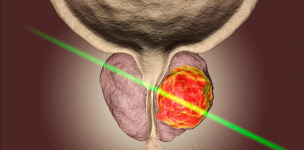Statistical reports from the American Cancer Society suggest that at least 1 in every 8 men suffers from prostate cancer at some point in life. The numbers are increasing so drastically that it is estimated that over 34,000 men could die due to prostate cancer by the end of 2021 in the United States alone.
As daunting as the numbers are, the advancing medical technologies offer several types of treatments for prostate cancer in 2021. Also, the number of cases of prostate cancer is more prevalent in older men above the age of 65 years. However, it is always better that you get yourself checked frequently to rule out any possible red flag.
Here, we will be discussing everything there is to know about the different treatments for prostate cancer in 2021.
Table of Content
Feel free to skip ahead if one topic catches your eye:
- What is Prostate Cancer?
- Who is at more Risk of Prostate Cancer?
- Diagnosis of Prostate Cancer
- Types of Prostate Cancer Treatment in 2021
- Quality of Life After Treatment in India
- Why Choose India for Prostate Cancer Treatment in India?
1. What is Prostate Cancer?
Prostate cancer is a type of malignancy that starts in the cells of the prostate gland and then grows out of control. The prostate is only found in males and is a type of gland that secretes seminal fluid responsible for nourishing and ensuring smoother transportation of the semen.
Given how common this type of cancer is, early diagnosis is very prominent in this type of cancer. Sometimes, the cancerous cells are localized and confined to the prostate gland. In severe cases, the cancerous cells undergo metastasis and affect other organs in the body.
Some of the types of prostate cancer grow and spread gradually, while a few others are aggressive and spread rapidly throughout the body. The majority of the time, the gradually spreading or the confined type of prostate cancer to the gland is what can be treated to help the patient be cancer-free.
Types of prostate cancer
The majority of the known types of prostate cancer in males are adenocarcinomas. This means that the cancerous cells originate from and within the gland itself. Some of the other severe and aggressive types of prostate cancer include:
- Small cell carcinomas
- Neuroendocrine tumors
- Transitional cell carcinomas
- Sarcomas
The above four types are very rare and are often diagnosed at a very later stage when treatment options are very scarce.
2. Who is at more Risk of Prostate Cancer?
Although it is tough to exactly pinpoint the possible risk factors of prostate cancer, there are a few that can enhance your chances of developing this disease. They include:
Age – As we said before, older men, especially the ones above 65 years are at predominant risks of developing prostate cancer.
Race – Although there are not many conclusive scientific studies to back up the claims, it has been noticed that prostate cancer is more prevalent in black men. They are also at risk of developing the more aggressive type of prostate cancer.
Genetic predisposition – If you have any close relative in your family who has died from prostate cancer, there are chances that the same might be passed onto you as well. Also, families with higher fatalities and diagnosis of breast cancer have a connection with prostate cancer as well.
Obesity – Obese males have heightened risks of developing the severe and aggressive form of prostate cancer.
3. Diagnosis of Prostate Cancer
The diagnosis for prostate cancer treatment is pretty extensive and starts when you report to your doctor with symptoms like blood in the urine, erectile dysfunction, trouble and pain while urinating or witnessing blood in the semen discharge.
If you are experiencing any kinds of symptoms that are wrongly impacting your health, you must consult your doctor immediately. Depending on the symptoms, the doctor will suggest undergoing two primary screenings:
Digital Rectal Exam (DRE) – This is a form of internal anal examination where the doctor inserts a gloved finger inside your rectum to assess the prostate. If the doctor feels enlarged size or tumorous growths, they will prescribe further examination.
Prostate-specific antigen (PSA) test – This is a blood test to analyze the levels of PSA in the blood. If the PSA levels are excessive in the bloodstream, it is an alarming sign of developing prostate cancer.
If the initial reports from the screenings seem abnormal, the doctor will then suggest a few other diagnostic examinations. You might have to undergo:
Ultrasound – a transrectal ultrasound is done to assess the condition of the prostate.
MRI – this helps the doctors get a clearer picture of the prostate and the severity of the cancerous spread inside or around the gland.
Prostate biopsy – a sample of the tissue is collected from the prostate gland to check in the lab for the possible presence of cancerous cells.
Degree of Aggression
Once the oncologist diagnoses that the patient has prostate cancer, the next step of the treatment is to determine the degree of aggression. Two tests help determine that:
- Gleason score
- Genomic testing
Your doctor will also conduct allied testing like bone scan, ultrasound, CT Scan, and PET scan to determine the degree of spread of the cancerous cell. This is the initial stage before the doctor moves forward with suggesting the types of prostate cancer treatment in 2021.

4. Types of Prostate Cancer Treatment in 2021
With the advancing medical technologies in India, more and more treatments are becoming available for effective cure from prostate cancer. Since prostate cancer is of two primary types – the initial stage and the advanced stages, the types of treatment depend on the stage of diagnosis.
Early Diagnosis
In patients with low-grade prostate cancer, the patient either does not require immediate treatment or no treatment at all. Most of the cases with early diagnosis expect the patient to ensure active surveillance of the condition.
You can get regular blood tests done along with prostate biopsies to ensure that the cancer is localized in the gland and hasn’t spread. If the patient’s prostate cancer isn’t growing at a rapid rate or showing signs of metastasis, active surveillance is the best form of treatment.
Advanced or Aggressive Type
In patients with a severe type of prostate cancer, there is a range of treatment options that are available in the established hospitals across India.
Let us take a look at some of the most prominent ones.
Surgical intervention
The first and one of the most obvious types of treatment for prostate cancer in 2021 is surgery. There are robot-assisted laparoscopic prostate removal surgery or retropubic surgery to remove the prostate gland from the body.
The prostate cancer treatment in India might cost between INR 2,00,000 to INR 2,50,000 for just the surgery.
Radiation therapy
Prostate cancer radiotherapy treatment is another prevalent option that uses high-powered energy beams like x-rays to kill the cancerous cells in the prostate gland. This type of treatment lasts consecutively for 5-6 weeks to ensure that the rays kill all the localized and surrounding cancerous outgrowths.
Another alternative form of radiation treatment is brachytherapy. In this, a radioactive source with radioactive seeds is placed inside the prostate gland to deliver a low dose of radiation to kill the cancerous tissues and prevent their growth.
The cost of radiation therapy can range from INR 30,000 to INR 20,00,000 depending on the duration of the treatment, the number of sessions, and the type of therapy.
Cryotherapy
Although quite underrated, cryoablation is another potent treatment for prostate cancer. In this procedure, the surgeon freezes and thaws the prostate tissues using freezing gas over a period of time.
Another alternative to this procedure is the high-intensity focused ultrasound in which the concentrated ultrasound beams are focused on the cancerous prostate tissues to kill them.
Chemotherapy
Another common and effective treatment for prostate cancer is chemotherapy. It uses drugs to kill the spreading and localized cancerous cells in the prostate. Some patients are either given oral chemotherapy or intravenous, depending on the severity of the condition.
The cost of chemotherapy sessions per cycle range between INR 50,000 to INR 80,000.
Immunotherapy
For patients who haven’t reported well to hormonal therapy, the next potent treatment option is immunotherapy. Under immunotherapy, the patient undergoes treatments like Sipuleucel-T (Provenge) treatment or other immunotherapy drugs to train and prepare your immunity to fight back the cancerous cells.
This is an effective treatment and is ideally administered in patients who are struggling with an aggressive or metastasized form of prostate cancer.
The cost of immunotherapy for prostate cancer starts from as low as INR 25,000 per cycle.
If you are planning on getting your treatment done in India, we’d highly recommend you opt for the same. Indian hospitals are equipped with cutting-edge technologies and experienced oncologists who can help you battle through the journey and come out stronger in the end. Even during Covid-19, medical tourists are preferring India for their treatments because of the cost-effective packages and higher success rates.
5. Quality of Life After Treatment in India
A new study has found that the quality of life after prostate cancer treatment in India was independent of the type of treatment the patient undergoes.
Only surgical interventions require a prolonged recovery timeline, especially because it involves the recovery of the incision as well. Some patients have reported experiencing urinary incontinence and issues with sexual functions after their surgery, however the same isn’t standard complications and are subjective to the patient’s body and recovery.
During your recovery, you must follow every piece of advice given by your surgeon or oncologist, depending on the treatment you are undergoing. Maintain a healthy diet and an active lifestyle to keep your immune functions optimal as well.
6. Why Choose India for Prostate Cancer Treatment in India?
Despite the types of prostate cancer treatment in India in 2021, the success rate was recorded as high as 91%.
Not only do you get access to better and state of the art treatment in India, but the hospitals are also staffed with the most experienced oncologists who can diagnose, identify and then treat the issues in record time.
India also offers easy medical visa approval for medical tourists, ensuring fast-tracking of the treatment procedure, which is ideal for patients suffering from aggressive types of prostate cancers.
Also, the overall cost of treatment is affordable and worthy, given the level of care the patient gets throughout their stay in the country. Despite the alarming situations of Covid, India also offers the best Covid management facilities for streamlined progress.
Take Away
Getting the correct and timeline treatment for prostate cancer is important. Not only does it help improve the patient’s quality of life, but it also helps them lead a cancer-free life. India is a leading country that offers state-of-the-art treatment with higher success rates and minimal complications. So, if you are considering visiting India as a medical tourist, we at Medinirvana can lend you a helping hand throughout the entire treatment journey.








Leave a Reply